'Turtle Island' is the name for the lands now known as North and Central America. It is a name used by some Indigenous peoples who believe their land was formed on the back of a turtle.
Though regional versions exist, the core of this creation story relates to a time when the planet was covered in water. Different animals all tried to swim to the bottom of the ocean to bring back dirt to create land but they all failed. A muskrat was the last animal to attempt the task. The muskrat swam deep and remained under water for a long time. Eventually the muskrat resurfaced with some wet soil in its paws. Sadly the swim took the muskrat’s life, but Nanabush (a supernatural being who has the power to create life) took the soil and placed it on the back of a turtle. With this act, land began to form and so became Turtle Island.
Not all creation stories from the Indigenous Peoples of America feature a turtle, some refer to a pregnant Sky Woman, others feature a Raven and others an ocean spirit called Sedna.

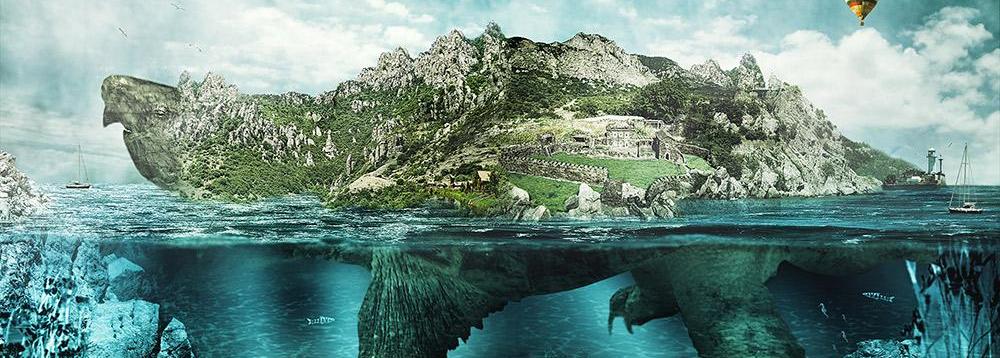
Turtle Island (© Katalinks/Dreamstime). Websource: The Canadian Encyclopedia - Turtle Island.
Indigenous people from Turtle Island are often referred to as 'Native Americans'. Turtle Island is a large place and there are over 1000 different Native American Nations, each with diverse cultures and experiences.
Culture
Native American culture and belief are deeply connected to their land and environment. Temperature, climate, the presence of mountains, rivers and oceans form the basis of spiritual belief and practice.
Below are some brief examples of different parts of Native American Culture. As previously stated, Native American Culture is highly diverse and cannot be fully represented here.
Totem Poles
Native American Totem Poles are carved into the trunks of large trees. These carvings are made using a variety of items including shells, wood, bone, antlers and beaver teeth. Depending on the intricacy of the design and experience/skill of the carver, a totem pole can take anywhere from 3 to 9 months to create and can be up to 12 meters high.
Totem poles are often used to tell stories with the symbols carved beautifully representing ancestors, different figures and events. Other uses included for memorials, houses or to mark graves.
Totem poles are created by the Pacific Northwest Nations who have access to large trees that are needed to create them.
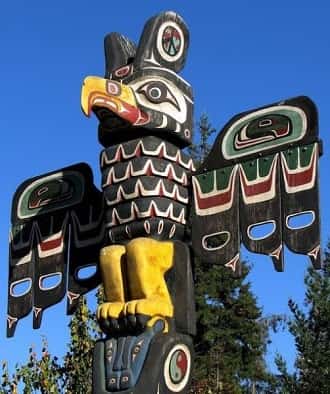
The Longhouse
The Haudenosaunee Confederacy (meaning ‘People of the Longhouse’) is often described as one of the oldest participatory democracies on the earth. It is made up of 5 nations; Mohawk, Oneida, Onondaga, Cayuga, and Seneca.
The purpose of the confederacy was to unite the Nations to live peacefully. Each Nation governed its own internal affairs and for matters relating to the confederacy, representatives from each nation would meet in a Grand Council.
Before colonisation, the Haudenosaunee lived together in Long Houses. Made from wood, bark and animal hide (used on door for warmth), Long Houses were up to 200 feet (60 metres) in length and 18 feet (5 metres) in width. These dwellings were windowless except for smoke holes set at 20 feet (6metres) intervals in the roof to allow smoke to escape from fires burning inside.
Being a matrilineal society (kinship based on the mother’s line), whole extended families would live in the Long Houses with individual rooms set aside for each family. Communal fires ran along the centre of the Long House.
To learn more about Long Houses and the people that live here, visit the The Haudenosaunee Confederacy website.
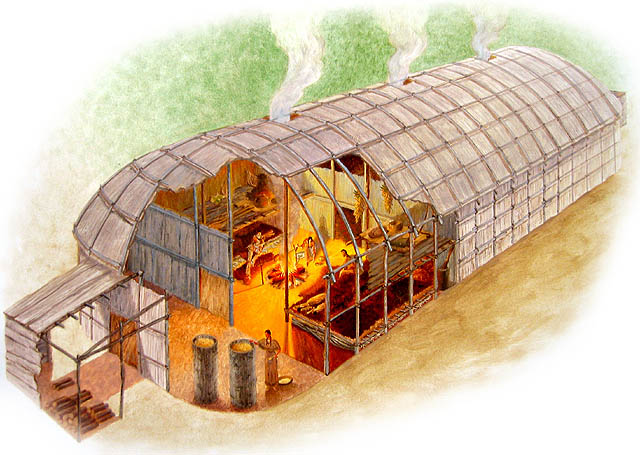
Image Source: Canadian History Workshop - Haudenosaunee
The Feathered Headdress
The Feathered Headdress is a culturally important item that was first believed to be created by the Sioux Nation from the Great Plains region. The creation of a headdress is a significant celebration and those who wear the headdress are held with great esteem and respect.

A Lakota Sioux Headdress made from full eagle feather.
The use of headdresses varies across the country. These variations included: who can wear them (for example feathered headbands are worn by both women and men from the Northeast Woodland region, but only Sioux men would wear headdresses); the materials used to make them (for example buffalo hide and horn headdresses are created by Plains Nations); the style (Nations in the California and Plateau regions wear basket hats made of fibres from cedar bark and spruce root).
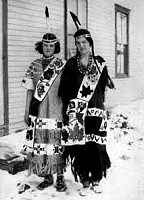
Abenaki headbands worn by women.
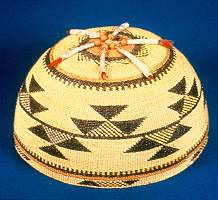
A Hupa basket cap

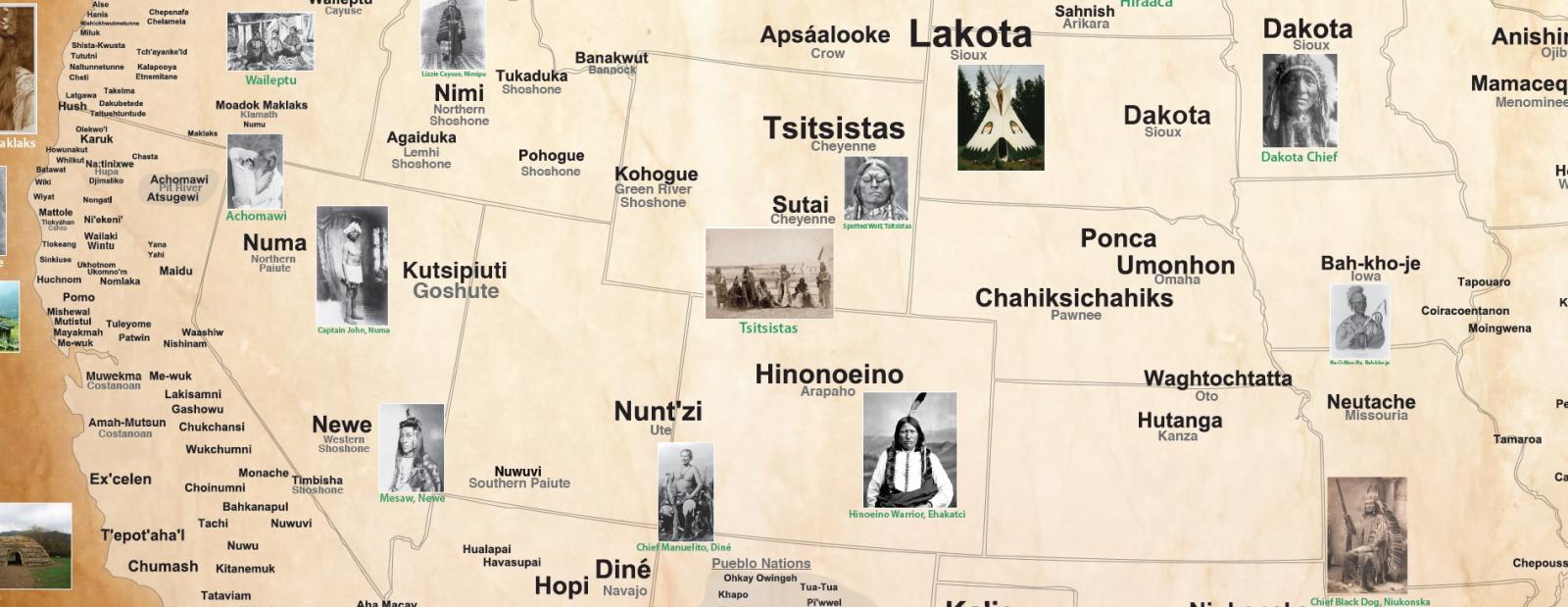
Map of Nations on Turtle Island. Source: Tribal Nations Map
Colonial History
In 1492, the Italian Christopher Columbus set sail from Spain. His intent was to head west in the hope of finding a more direct route to Asia.
It was only by chance he stumbled upon the ‘New World’. In October 1492, Columbus and his crew set foot on an island in present day Bahamas and claimed it for Spain, beginning the invasion and colonisation of the Americas, including Turtle Island, by various European countries.
Since this time of invasion, Native Americans have experienced murder, violence, disease, dispossession from land and suppression of languages, culture and identity by colonial powers.
The Trail of Tears
One significant event was 'The Trail of Tears.' In order to move Native Americans off their lands to steal them, in 1830, President Andrew Jackson signed the ‘Indian Removal Act.’ This law allowed the U.S. army to forcibly remove the Cherokee, Choctaw, Creek, Chickasaw and Sminole peoples from their land to present day Oklahoma.
The ‘Trail of Tears’ refers to the harsh journey made on foot through challenging terrain and winter conditions. The exact numbers of people dislocated is unknown and sources range in estimates from 60,000 to 100,000 Native American people being dispossessed from their lands.
Tragically, up to 15,000 people died during the journey as a result of the actions of the U.S. government and army.

The Trail of Tears, was painted by Robert Lindneux in 1942
Boarding Schools
Christian-run Native American boarding schools have played a destructive role in removing cultural identity from the Native American people. Children were separated from their families and sent to live in boarding schools to assimilate them into the European manner of living. People were prevented from practising culture, speaking their language and using their traditional names. All sense of cultural identity was taught to be a source of shame for Native American children.
The Christian-run boarding schools were also severely underfunded and living conditions were poor. Children were subjected to abuse and the loss of culture created a legacy of intergenerational trauma in the Native American community.
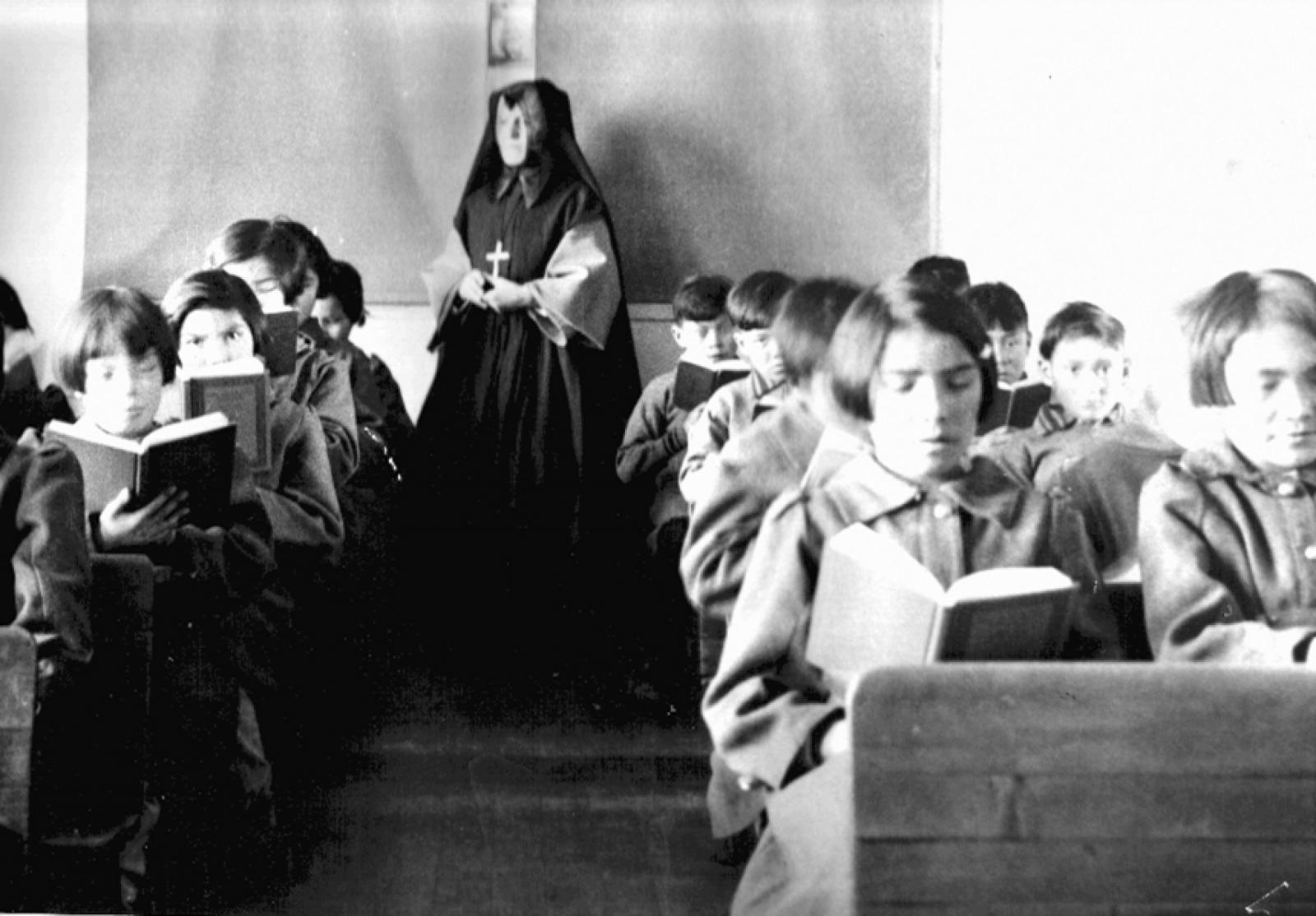
Image Source: St. Anne's. CBC News
Cultural Appropriation
A key issue that Native American people have been fighting against are the many negative stereotypes about their culture and how they are presented in society.
In different forms of media including children’s books and T.V. shows, Native Americans are often portrayed as violent and aggressive. Symbols of Native American people have been used by many businesses and organisations in highly disrespectful ways. This includes using images of ‘Chiefs’ and famous historical figures for selling children’s toys, costumes for festivals and celebrations (for example non-Native American people wearing headdresses to emblems used for sporting teams).

Image Source: I is for Ignoble: Stereotyping Native Americans
A Cultural Resurgence
Despite the historical and continuing injustices experienced by Native American people, many Nations are fighting to revive culture and language and to protect their rights.
There have been and continues to be many important Native protest movements including the current protests against the Dakota and Keystone XL Pipeline projects which plan to disrupt important cultural sites.
New digital resources are being created to help communicate the truth of Indigenous culture and the history of colonisation. The website Native Knowledge 360° (NK360°) is one such website that provides information about Native American people by using more Native narratives and voices in discussing the truth about culture and history.
Language revival is occurring across the continent and academics such as Dr. Michael Yellowbird (see below for more information) have done significant research to support the healing that comes through engaging with culture.

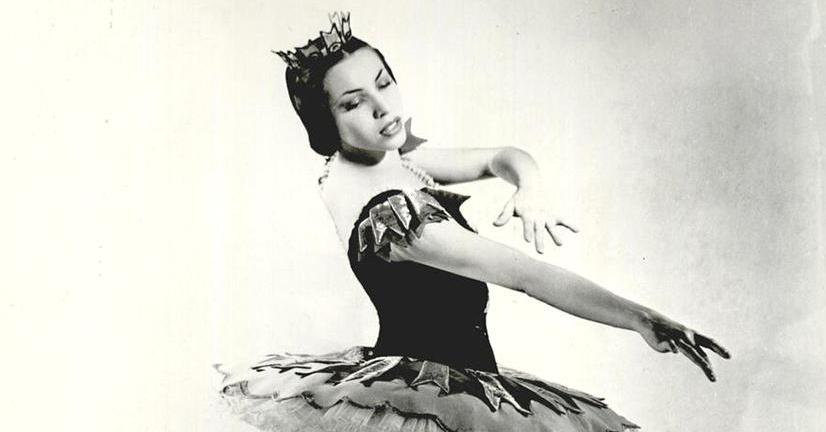
Maria Tallchief was proud of her Native American identity. She refused to change her cultural name of 'Tallchief'. She danced for the Paris Opera Ballet and the Boshoi Theatre in Moscow.
Leaders
Below are three people who have made important contributions to Native American culture and politics.
Dr. Michael Yellowbird
Dr. Michael Yellowbird is the Director of Tribal and Indigenous Peoples Studies and Professor of Sociology at the North Dakota State University. He is a citizen of the Three Affiliated Tribes – the Mandan, Hidatsa and Arikara Nations.
Michael’s teaching, writing and research focuses on ‘neuro-decolonization’ and improving Indigenous people’s mind body health, through developing a mindful practice that engages with meditation and traditional Indigenous culture.
Michael’s work has had a positive impact for Indigenous cultures across the world including Aboriginal people here in Australia.
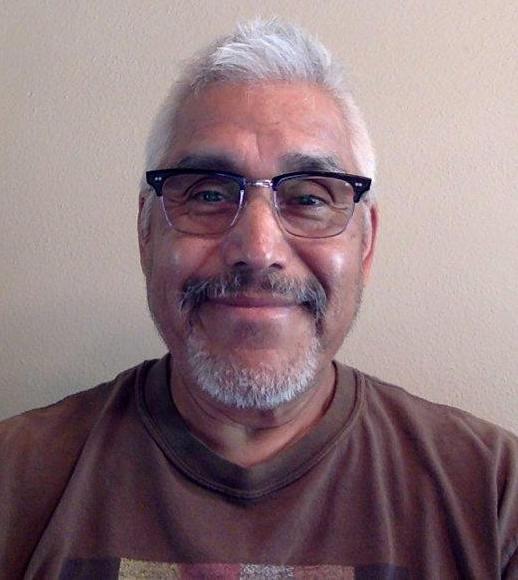
Image source: Neurodecolonization and Indigenous Mindfulness
Maria Tallchief (1925 – 2013)
Maria Tallchief became America’s first Prima Ballerina and has performed on the global stage.
Born 1925 in Fairfax Oklahoma, she was a member of the Osage Nation. From a young age she excelled in dance and music. Maria’s family moved to Los Angeles, California in the hope of furthering her opportunities. Facing severe racism and prejudice she pursued with her dreams where upon graduating high school, Maria moved to New York to pursue ballet full time.
Maria then went on to dance with the Paris Opera Ballet and the Boshoi Theatre in Moscow (becoming the first American to do so on both occasions). Throughout her career, she was told constantly to change her name from ‘Tallchief’ to something that would hide her cultural ancestry, but Maria Tallchief refused to do so as she was proud of her Indigenous culture.
Retiring from dancing, Maria set up her own dance company and continued to speak out against the racism and prejudice that Native American people face.
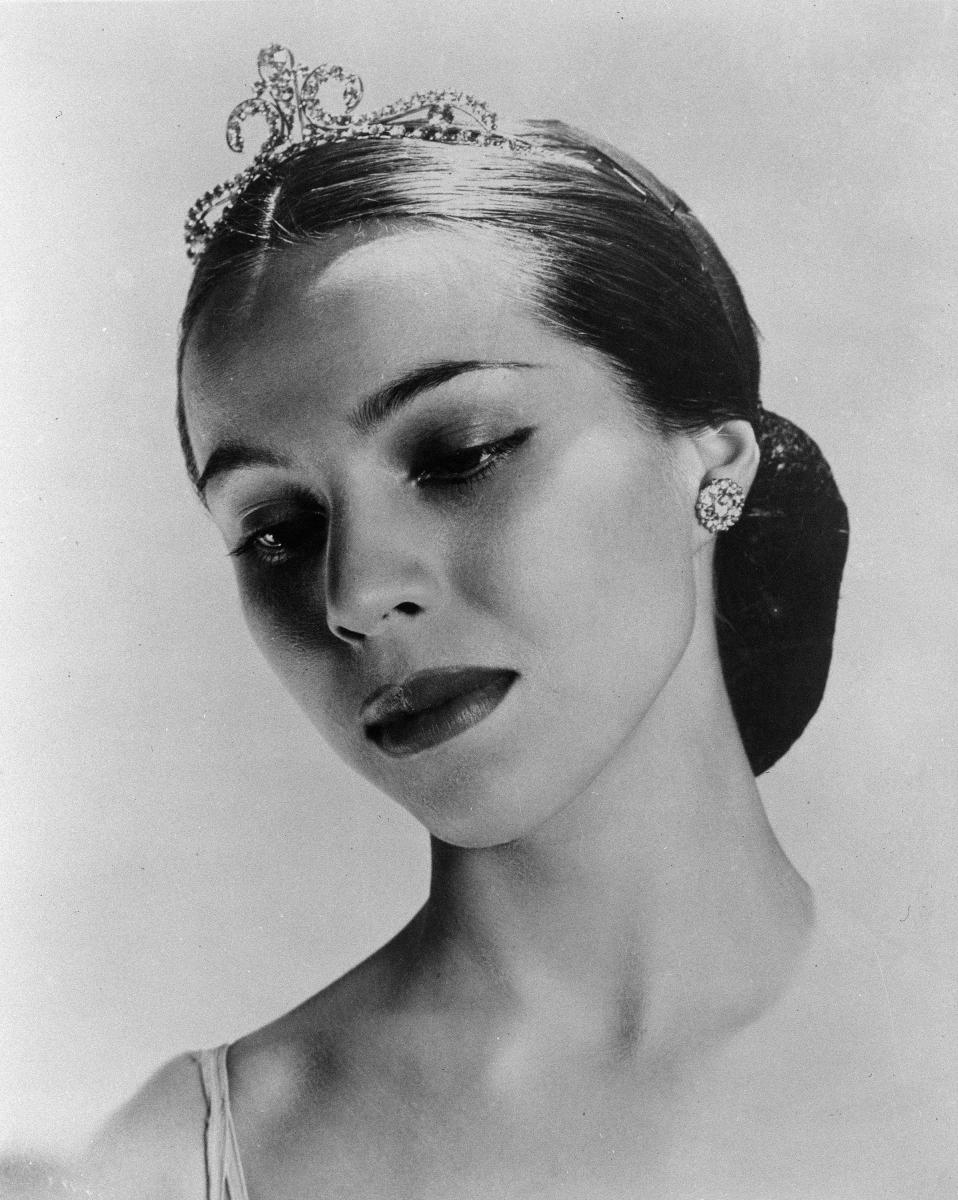
Image Source: Maria Tallchief, Brilliant American Ballerina Who Broke Barriers
Dr. Susan La Flesche Picotte (1865 – 1915)
Dr. Susan La Flesche became the first Native American to receive a medical degree. As a child she witnessed another Native American women die because the local white doctor refused to treat her illness based on her race. This inspired her to train as a physician so she could help the people on the Omaha Reservation where she lived.
In 1906 she lobbied for the prohibition of alcohol on reservation land and in 1913, she fulfilled a personal dream by opening a hospital in the reservation town of Walthill Nebraska. In addition to providing health care services for the local Indigenous community, the hospital houses a museum dedicated to her work and a history of the Omaha and Winnebago Nations.
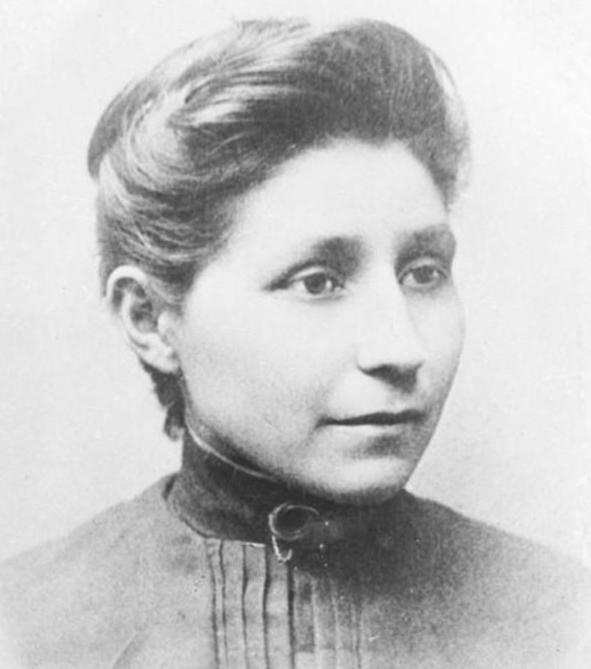
Image Source: AMPLIFY: Dr. Susan La Flesche Picotte
Sources used in writing this article:
- The Canadian Encyclopedia, Turtle Island
- Native Art in Canada, The Creation of Turtle Island
- Native Languages, Native American Indian Culture Areas
- Native American Indian Fact, Totem Poles
- Indians.org, Totem Poles
- The Haudenosaunee Confederacy, About The Haudenosaunee Confederacy
- Canadian History Workshop, Haudenosaunee
- Native Languages, Native American Headdresses: Facts for Kids
- Indians.org, The Indian Headdress
- NPR, The Map Of Native American Tribes You've Never Seen Before
- History, The 13 Colonies
- History, Christopher Columbus
- Biography, Christopher Columbus
- History, Trail of Tears
- History, When Native Americans Were Slaughtered in the Name of ‘Civilization’
- Sojourners, Time for Acknowledgement: Christian-run Native American Boarding schools left legacy of destruction
- Ferris State University, I is for Ignoble: Stereotyping Native Americans
- Smithsonian, Native Knowledge 360° (NK360°)
- BBC News, Dakota Pipeline: What's behind the controversy?
- Indigenous Mindfulness, Neurodecolonization and Indigenous Mindfulness
- All That's Interesting, Maria Tallchief
- National Women's History Museum, Maria Tallchief
- U.S. National Library of Medicine, Dr. Susan La Flesche Picotte
